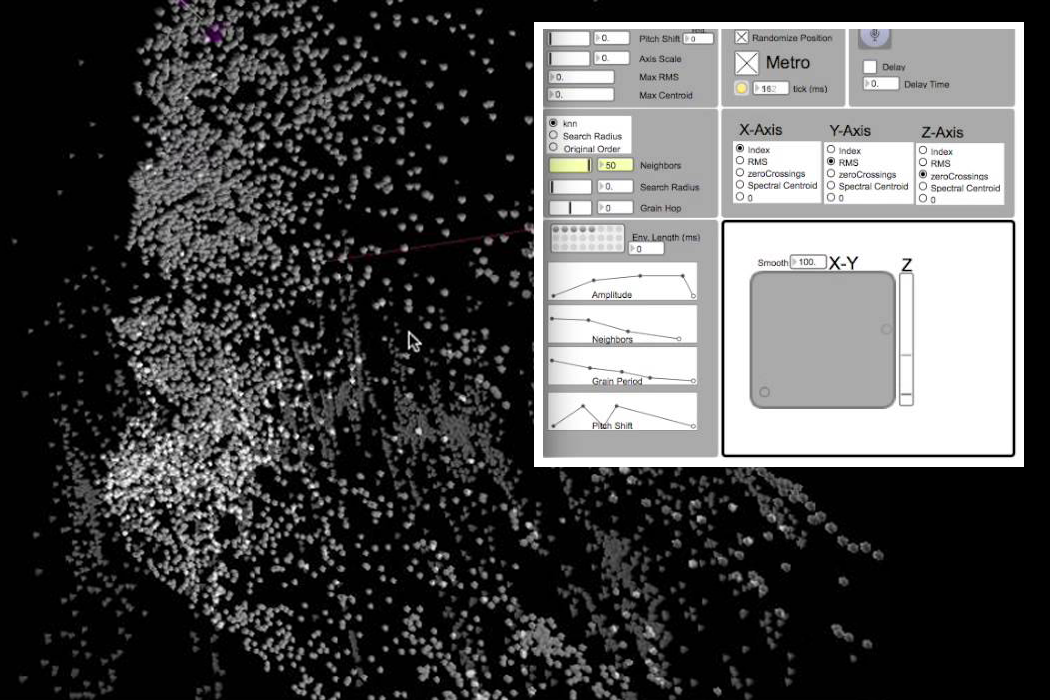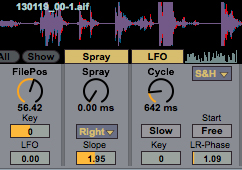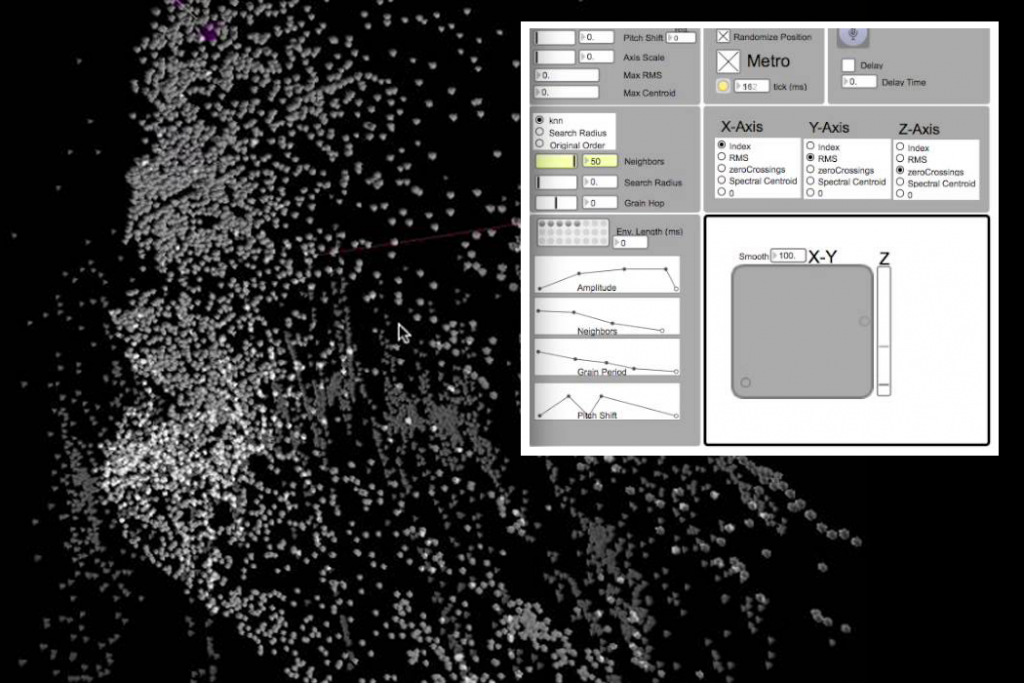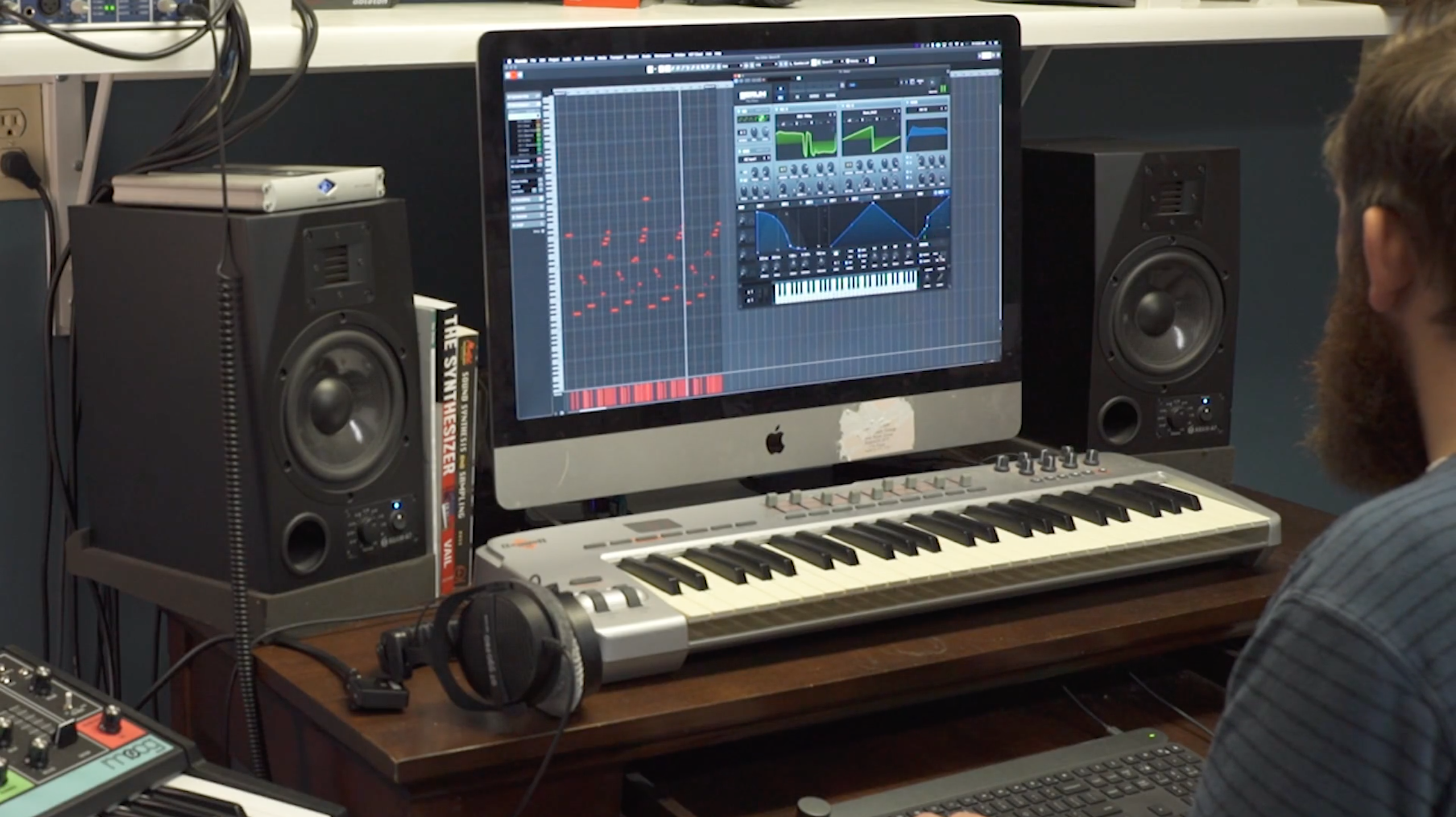
+ Learning about synthesis? Soundfly’s got a definitive new online course called Advanced Synths and Patch Design For Producers! Preview for free and subscribe for access.
When it comes to sampling and Ableton, there are an overwhelming number of methods for turning almost any recorded sound into a functional musical tabula rasa. From simply dragging and dropping a recording into a track and splicing manually, to warping, distorting, reversing, transposing, and making use of plugin-based tricks of processing, one can explore the parameters of a single piece of audio for months at a time. A slightly lesser known, yet highly rewarding method to add to the bevy of sampling workflows in your tracks is granular synthesis.
First explored in the early ’60s as tape recording and creative manipulation were heavily utilized, granular synthesis has taken on an entirely new dimension in the digital era, and features many comparatively simple ways to explore original sonic territory. Although this form of synthesized processing operates on a micro-sound time scale, it’s functionally very similar to sampling. In essence, all you need to do is drag and drop a sample into the granular synth plugin on your DAW — or any sampler at all — play the notes you want, and away you go.
Where granular synthesis differs is in its myriad playback times. Slow playback times over large samples are often described as “clouds” or “soundscapes” that transform otherwise static sounds into entire worlds unto their own. And on the other side, playing sounds quickly can create new waveforms, transforming one sound into something that can be played polyphonically on a synth like a strange sound generator.
But first, don’t forget to check out Soundfly’s online course, Advanced Synths and Patch Design for Producers, and learn how to move beyond presets to create a wide array of scintillating synth sounds for your productions.
The basic principle of granular synthesis, not coincidentally, lies in the idea of sonic grains. What the synthesizer will do to a waveform is create grains as short as 1 millisecond that “window” through a sample. That is, whichever 1ms slice of the waveform that the grain covers becomes the 1ms of sound that the synth will emit, and it loops through the grain rapidly and randomly, backwards and forwards, to create a fluid, extended, playable sample from that snippet.
Of course, in many synths, parameters such as grain size, position, and sample pitch can be modulated as the grain moves around, which can create everything from short clicks and pops all the way through to robust-sounding chord progressions.
Here’s an illustrative graphic showing how an audio sample is cut up and put back together in granular processing, provided by Research Gate.

Many DAWs have granular synthesis at their roots; this type of synthesis is actually at the heart of many pitch and time-shifting algorithms that come standard in many digital audio environments.
For instance: controlling the speed at which a specifically-sized grain moves across an audio sample would give the classic sped up or time-stretched effect, but without the change in pitch normally associated with simply changing the speed of the sample, because the grain simply plays the waveform as it exists in the software.
When it comes to granular synthesis for sound design, there are nearly too many options to count. As the age of the DAW has matured, sampling techniques like granular synthesis have compounded and expanded far beyond their original use. Synths and VST’s like Native Instruments’ Form and Fruity Loops’ (former) Granulizer are in large part based on granular manipulation. But, if you’re interested in exploring the lesser-known and experimental territories provided by this potent type of synthesis, a journey into the depths of Max for Live provides nearly endless options.
One of my favorites is the Granulator (now in its second edition) by Robert Henke, a.k.a. Monolake and an original co-developer of Ableton Live. As the product of 12 years of Max patching, granular explorations, and synthesis development, it represents one of the most fine-tuned granular synthesizers in existence — and it’s free if you have Ableton Live and Max for Live.
To use it, you simply need a sample. Drag and drop a clip into the synth, draw or play some MIDI notes, and watch the grains play. One of the easiest ways to get started learning the synth is by changing both the grain size and the file position; these represent the basic building blocks of the type of sound you’ll be gathering (short, clipped, or metallic on the one hand, and on the other, long and chord-like).

The main feature that attracted me to the Granulator, however, was the “spray” function. This is, in essence, a randomizer that sprays grains in both directions, in time with the rate that future grains are sewn, creating incredibly lush and textured passages. Henke describes the end result as “a swarm of sonic particles.”

Another key element is the included LFO; much like a synth like Massive, the LFO is ingrained (pun intended!) into every possible element of control needed to create fluctuations that are completely wild and off the grid, or subtly random to create movement. A final area of offered exploration: the Granulator has different voice amounts, meaning that the multi-timbrality of the synth itself can be controlled (and automated, even), moving from sparse, three-grain textures to massive chords.
Go venture forth and explore Granulator here, it’s free to download if you own Ableton Live 9.
Want more?
Continue learning with hundreds more lessons on mixing, DIY home audio production, electronic music recording, beat making, and so much more, with Soundfly’s in-depth online courses, like The Art of Hip-Hop Production, Modern Mix Techniques, and of course Advanced Synths & Patch Design (to name a few). Subscribe to get unlimited access here.





